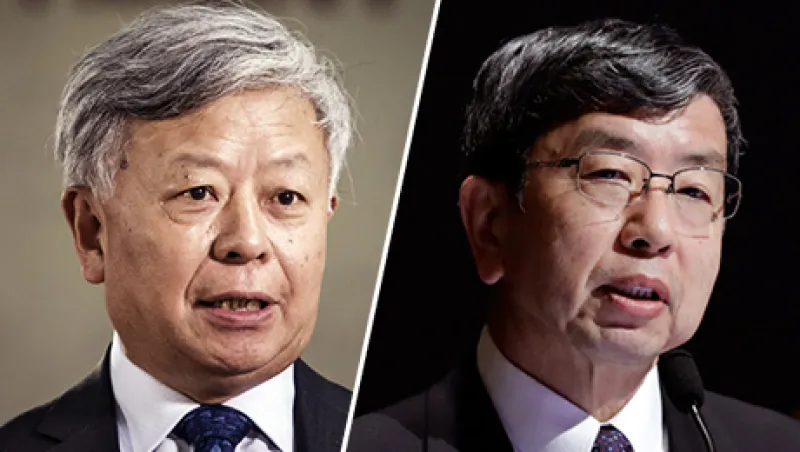For Asia’s top financiers, the recent formation of the Asia Infrastructure Investment Bank in Beijing was a sign of China’s growing economic strength. Many assumed the young AIIB and the well-established Asia Development Bank would be rivals in financing the region’s infrastructure projects.
It’s a notion that former Chinese vice finance minister Jin Liqun, the founding chairman and president of AIIB, sought to dispel this week by making it clear the two multilateral banks are partners — not rivals — and have formed a strategic alliance to begin chipping away at Asia’s annual $1.7 trillion infrastructure funding need.
“We do have challenges at the AIIB – we are only two and half a years old — but we also have strong support from the ADB and the World Bank,” Jin said during the opening of the Manila-based ADB’s annual board meeting this week in Yokohama, Japan. Jin also took the opportunity to woo many skeptics at the summit, reminding them that he’s an ADB alum, having served from 2003 to 2008 as vice president in charge of private sector and South, Central and West Asia operations. “I was a vice president at ADB for five years, and in this respect, we have enjoyed smooth sailing.”
The ADB’s annual gathering this year is particularly important as the 3,000-plus delegates attending will celebrate the 50th birthday of the bank, founded by Japan and the U.S. in 1967. It’s always been led by a Japanese president.
ADB President Takehiko Nakao confirmed that the two multilateral banks have worked closely in the past few years, and that he and Jin have met no fewer than nine times to discuss cooperation. Founded in 2015, the AIIB provided $2 billion in financing for 12 projects, including co-financing two projects with the ADB in 2016, its first full year of operations.
Under Nakao’s leadership, the ADB has ramped up lending, especially in infrastructure, assisting countries that remain economically vulnerable and politically volatile. Last year the bank issued a record $31.5 billion in loans, grants, co-financing, and financial technical assistance, up 16 percent over 2015. The accelerating pace of lending, which included an unprecedented $17.5 billion in loans and grants, compares with the $267 billion in loans and grants that ADB has handed out across the region since its founding in 1966.
Nakao, who was Japan’s vice minister of finance in charge of foreign exchange and currency policies before he joined ADB as president in 2013, says he and Jin have discussed a wide range of cooperation.
“We have discussed many topics, such as local currency financing, using skills of the staff,” Nakao said. “So there are many things we can cooperate on. From the very beginning I have talked about cooperation with the AIIB.”
Asia needs $1.7 trillion in infrastructure investments a year for the coming decade, according to a recent ADB study. At present, Asia-based firms, including the two multilateral lenders, can only finance as much as 10 percent of that need. “The financing need is so large,” said Nakao. “The demand for infrastructure is so large that we don’t really compete.”
Jin sees other benefits in working together.
“There are certainly risks in financing infrastructure — country risk, bureaucratic policy risks — but some of these risks can be mitigated if we multilateral development banks work together,” he said.






